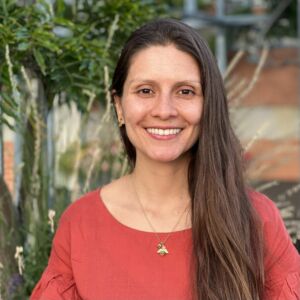ABOUT US
CURRENT FAB MEMBERS
Andes Amazon Fund (AAF)
Bobolink Foundation
Charles S. Mott Foundation
Climate and Land Use Alliance (CLUA)
Ford Foundation
Full Circle Foundation (FCF)
Gordon and Betty Moore Foundation (GBMF)
Margaret A. Cargill Philanthropies (MACP)
Open Society Foundations (OSF)
Re:wild
Swift Foundation
The Christensen Fund (TCF)
The Tenure Facility
What members say about FAB

“The most valuable aspect about FAB is the possibility of strategizing grantmaking together, understanding where foundations are investing and which areas we should be bolster together.”

“FAB is a great collaborative space where funders can jointly shape the agenda and work plan that reflects and leverages the intersection of interest among funders.”

“It is helpful to know what other funders are working on similar issues or in similar geographies, so that efforts can be coordinated.”

“The collaboration and learning opportunities provided by FAB help us do our work better both individually and collectively in pursuit of our joint vision for the Amazon basin”
History
The Funders of the Amazon Basin (FAB) launched in 2011 as an informal gathering of four foundations (Gordon and Betty Moore Foundation, Blue Moon Fund, John D. and Catherine T. MacArthur Foundation, and C.S. Mott Foundation) spurred by a shared desire for increased coordination among program officers working in this shared geography. By the end of that first year, the group had grown to seven.
Since then, the group has met regularly via Zoom and in person. Contributions from members supports meeting costs, facilitation, and a FAB Manager position. The current FAB membership has grown to eleven funders representing over $270M in grantmaking over the period 2016-2021.
Over its history, the FAB group has offered shared learning space, where foundations working on some aspect of protecting natural resources and promoting sustainable, inclusive development and a respect for human rights in the Amazon can come together to discuss shared concerns and exchange information. This sharing includes discussion of shared grantees, strategies, and lessons from evaluations.
Although FAB is not a platform for shared grantmaking, in several cases, the FAB conversations have sparked collaborative and complementary grantmaking among subsets of FAB members. For example, in 2014, the group commissioned a white paper on communications strategies. The white paper documented existing shared grantees and identified emerging opportunities for collaboration. Complementary grants and emerging collaborations can be traced to those conversations. The FAB group also offers a space for foundations to strategize about the best way to support shared grantees. In at least one case, the group discovered that a single grantee was receiving support from several institutions, leading to a discussion about ensuring complementarity among the programs supported.
The FAB group differs from some other funder collaboratives in that its driving source of cohesion is the shared focus on a particular territory, rather than a particular issue or grantmaking focus. Members recognize the complex interplay of ecological, social, cultural and political dynamics that shape this multi-country biome. Although initially driven primarily by grantmaking in the areas of conservation and sustainable development, the FAB group has expanded to include funders with an explicit focus on social inclusion, human dignity, and indigenous peoples’ rights.
The FAB group members recognize that the lens each foundation brings to work in the Andes-Amazon may cause it to see an issue differently from colleagues in other foundations. FAB members may not always agree on a particular grantmaking strategy or approach. However, the FAB group has become a safe space where these discussions can take place. The working hypothesis is that understanding each other’s strategies can avoid duplication of efforts, promote complementarity, inform future grantmaking, and reduce the likelihood that one member’s investments could inadvertently undermine another’s efforts.

